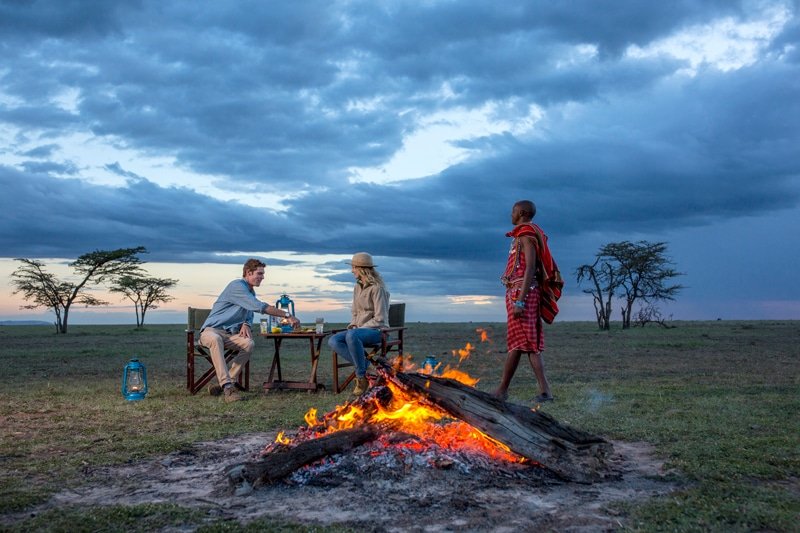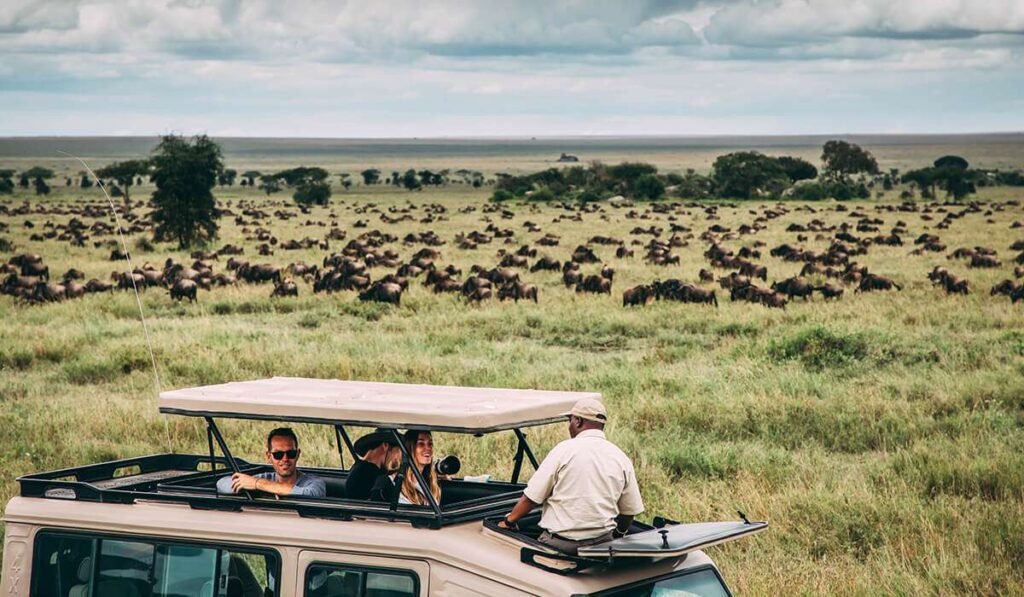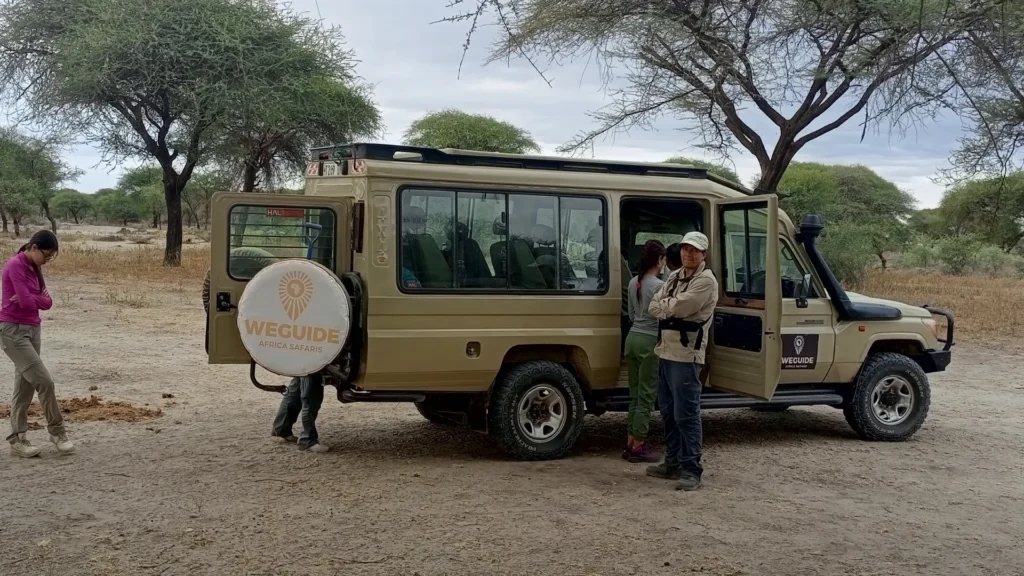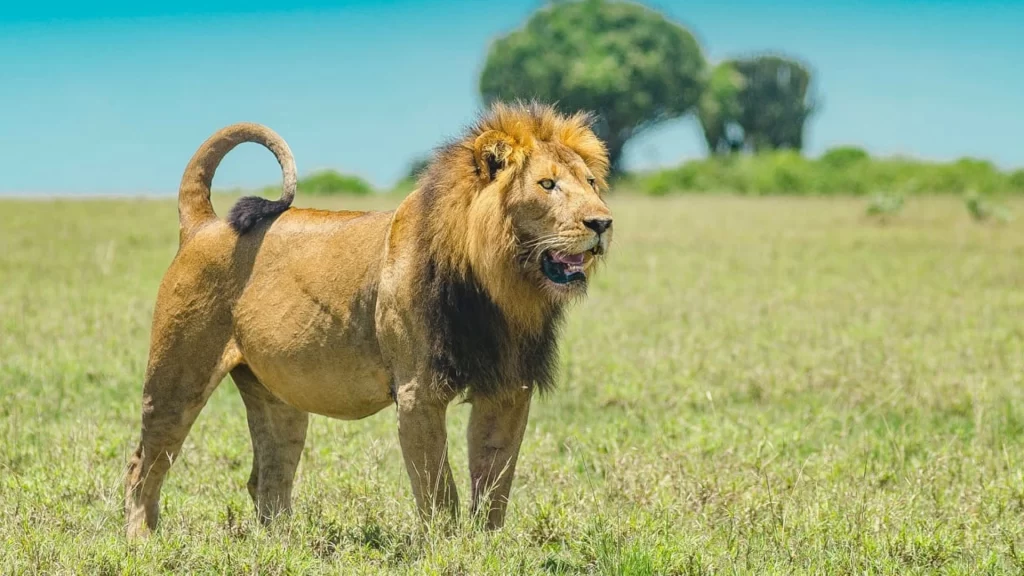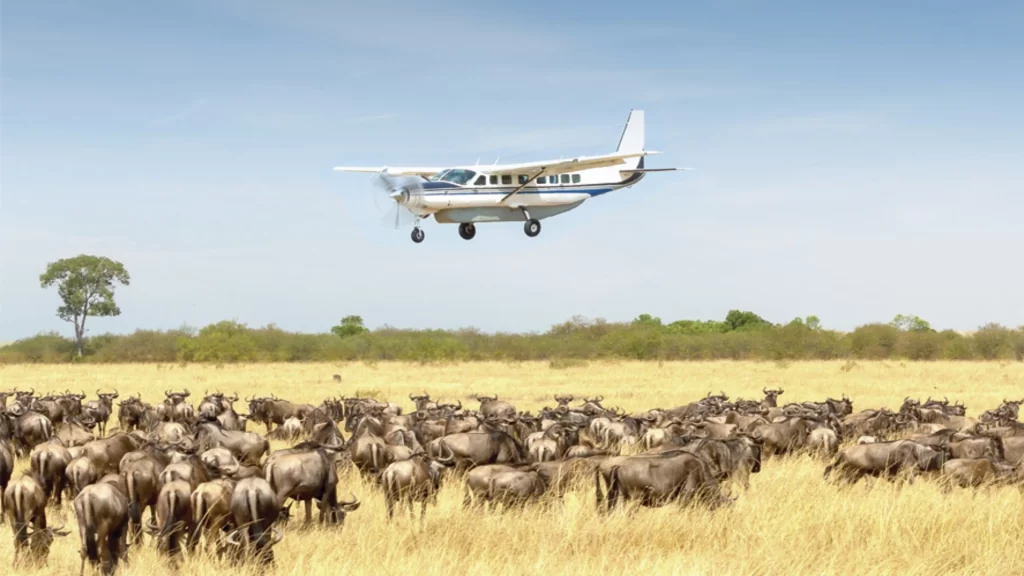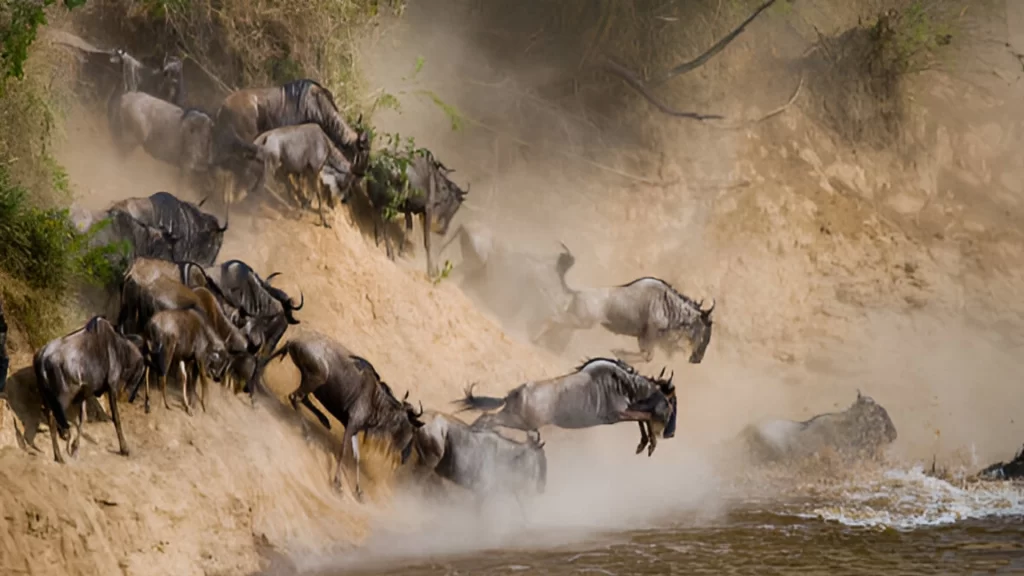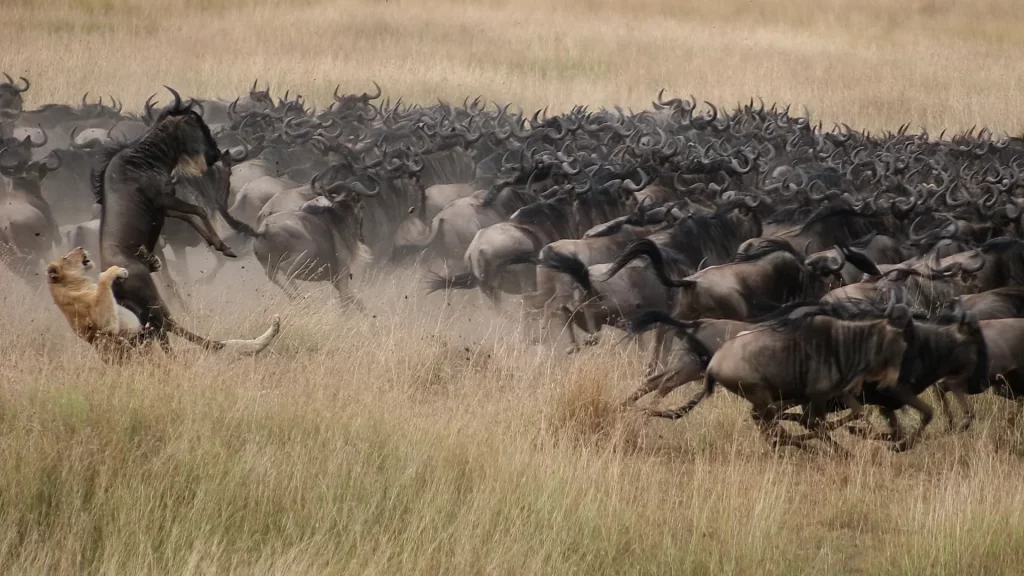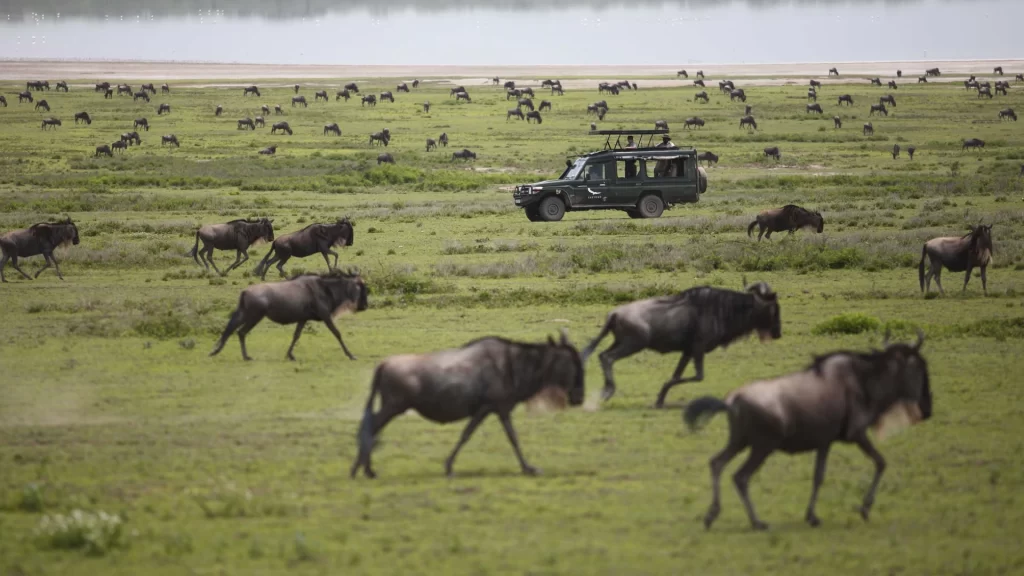The Great Migration stands as one of the most spectacular wildlife events on the planet. Furthermore, this natural phenomenon takes place annually across Tanzania’s Serengeti and Kenya’s Masai Mara. Moreover, it sees more than 1.5 million wildebeest journey across the ecosystem in search of greener pastures. Additionally, 200,000 zebras and gazelles join this epic adventure.
Serengeti Wildebeest Migration: Calving Season
From January to March, the Serengeti wildebeest migration begins in the southern plains during calving season. During this period, thousands of newborn calves arrive within a few short weeks. Consequently, predators like lions, hyenas, and cheetahs are never far behind. As a result, this period becomes especially dynamic for wildlife viewing.
The southern Serengeti transforms into a nursery for new life. Meanwhile, the vast open plains provide ideal grazing conditions. Therefore, herds concentrate in this region for several months. Subsequently, visitors witness incredible predator-prey interactions throughout this season.
Wildebeest Migration Tanzania: The River Crossings
As the dry season sets in, the herds move northward through the ecosystem. By June and July, they face some of the migration’s most dangerous moments. Specifically, they must cross the treacherous Grumeti and Mara Rivers. These river crossings are intense and dramatic.
Animals must battle strong currents during these crossings. Similarly, they must evade crocodiles lurking beneath the surface. However, this drama is exactly what makes the wildebeest migration Tanzania so captivating. Therefore, these moments create unforgettable wildlife experiences.
Best Time to See the Great Migration
The best time to see the Great Migration depends on your preferred experience. For calving and predator action, visit between January and March. Meanwhile, to witness the famous river crossings, plan your safari from July to October.
Each season offers unique wildlife opportunities. During April to June, herds move through the western corridor. Furthermore, this period provides excellent game viewing with fewer crowds. Subsequently, the northern regions become active from July through September.
Beyond the Herds: Serengeti’s Rich Biodiversity
In addition to the large herbivores, you’ll spot elephants, giraffes, and countless bird species along the route. These encounters highlight the incredible biodiversity of the Serengeti ecosystem. Moreover, resident wildlife populations thrive year-round in this protected area.
Professional guides enhance your migration experience significantly. Additionally, they understand animal behavior patterns and optimal viewing locations. Therefore, expert knowledge ensures you witness the most spectacular moments.
The Ultimate Wildlife Experience
The Great Migration offers unmatched scenes of endurance, instinct, and survival. Furthermore, it provides a once-in-a-lifetime opportunity to connect with nature’s raw rhythm. This natural spectacle demonstrates the incredible resilience of African wildlife. Moreover, it highlights the importance of conservation efforts across East Africa.
Witnessing The Great Migration creates memories that last forever. The experience showcases nature at its most powerful and beautiful. Therefore, it remains one of Africa most sought-after wildlife adventures.
